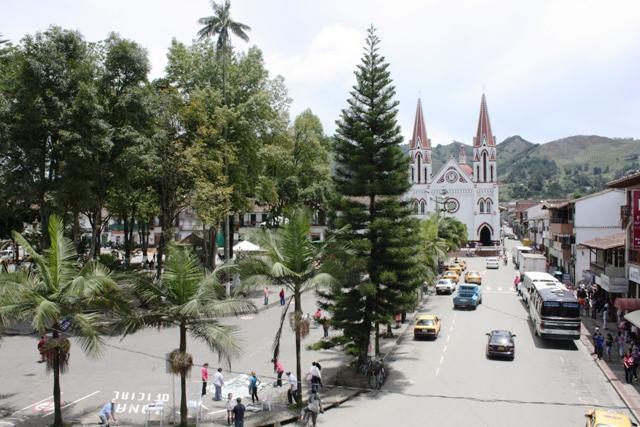La Ceja, Antioquia, Colombia
Suggest Place to Visit
932
Track to location with GPS |
 |
The territory of what is now La Ceja was inhabited by the Tahamies Indians, a peaceful tribe dedicated to agricultural work. Mainly to the cultivation of corn. The occupation of the Spanish Crown occurred around the year 1541 when Álvaro de Mendoza, lieutenant of the conqueror Jorge Robledo, advanced an expedition through the Altiplano of Eastern Antioquia and discovered an extensive valley, with crystalline waters and green meadows that he called at the beginning Valle de Santa María, known today as La Ceja del Tambo Valley. Since the early seventeenth century, inhabitants of the city of Santa Fe de Antioquia and the Aburrá Valley began to move to eastern Antioquia in search of land suitable for agriculture and livestock. During the 17th century and almost all of the 18th century, civil and ecclesiastical affairs were supplied in the Rionegro district. On December 7, 1789, the village was elevated to a district by order of Governor Francisco Baraya y la Campa, on land that was later donated by Maria Josefa Marulanda, which is why she is considered the founder of the town. According to a document signed on May 19, 1820 in Rionegro, Mrs. Marulanda donated land for the streets, two churches, a plaza and a prison and sold lots to the settlers. In the same year, Manuel Villegas was appointed as the first Pediatric Judge of La Ceja, and Pedro de Arango as a settlement judge. The latter was in charge of distributing the lands donated by Mrs. Marulanda, indicated those destined for the church and the town hall, and delimited the square and some streets. The topography undoubtedly made the layout possible, adopting the strict geometry of the Spanish checkerboard. The story goes that in 1824 the town had 2,012 inhabitants, of which 98 were slaves. The town made up 6 tile houses, 75 thatched houses and 316 houses in the countryside. Seven years later the number of settlers had grown to 3,291, of which 186 were slaves. La Ceja was elevated to the category of municipality in 1855; Fourteen years later, in 1869, La Ceja already had several important places in addition to the municipal seat: Vallejuelo, Medio de los Ríos, El Tigre and La Miel. In 1905 the first studies were carried out for the installation of the aqueduct and in 1927 the first aqueduct and sewerage system came into operation. In 1935, the construction of the metallic aqueduct began, which was completed in 1954. In November 1916, the first electric plant with capacity for 500 bulbs was inaugurated, which served as public and residential lighting for the almost four thousand inhabitants. In 1939 this plant was expanded based on a hydrological study of the Piedras and Buey rivers. In 1889 the parish acquired the house where the current hospital was built and administered it until 1932; later, the hospital happened to be administered by the municipality. When the road was opened in 1683, the road between San Nicolás de Rionegro and Santiago de Arma was opened, which in turn led to Popayán, the settlers built next to it a tambo or shelter for passers-by, which gave rise to the specification of the place that began to be called “La Ceja del Tambo”. FUN FACTS ABOUT THE HISTORY OF THE MUNICIPALITY: The chapel of Chaparral was built in 1777. It was about 15 meters long by six meters wide and on one side of it a room. Fr. José Pablo de Villa, celebrated the Eucharist and administered all the sacraments. After many years it was donated by the Lord of Villa to the future parish and the lands that it had around it he gave to his slaves. La Unión was a fraction of La Ceja del Tambo until 1911, the year in which it was established as a municipality. Likewise, La Ceja del Tambo was part of the province of Popayán, in the Department of Cundinamarca, until July 1, 1820, when it was segregated from that and added to that of Antioquia. It was also part of the province of Córdoba and the department of Sonson. The Parish Church of La Ceja del Tambo was definitely created in 1818. In 1819 and out of hatred of the royalists, the city of Rionegro burned a large part of its archive. Because of that, it is very difficult to reconstruct the history of La Ceja del Tambo today. The beautiful font in the main square of the town cost 5,080 and was placed on October 20, 1895. The parish church began to be built by the parties that the population was in the plain of Doña Maria Josefa Marulanda or Valle de las Cimarronas in the year 1815. At first they put straw and later, tiles. In 1854 they reformed it notably: They spent 23,508.75 and delayed the work for four years. In 1915 they made another big upgrade and expanded it. In 1938 they changed the tower that the teacher Benjamin Ortiz had made in 1854 for the current one, directed by a Spanish engineer and which cost 28,000. The church has twelve beautiful and fine silver candelabra and a very rich solid silver tabernacle, bought in Europe, through the efforts of the priest Pbr. Mariano de J. Botero. It cost 14,539, it arrived in La Ceja del Tambo on September 1, 1897 and was inaugurated on the patron saint's day, July 16, 1898. The La Ceja cemetery was built in 1815 and the hospital in 1888. the convent building of the Discalced Carmelites, began to build it on March 12, 1912 and its church, on March 1, 1915, the latter considered of architectural and historical relevance. The construction of crosses of the largest that could be and were to advocate for the end of the harsh winter that hit us at that time. Almost on that occasion the defeated calf declared a mandatory rest day, because it was not possible to leave for fear of the defeated calf. The Cross and the candles of the parish church are made of silver, made from the bathroom set in the house of Don José Maria de Aranzazu, who donated it for this purpose. The beautiful image of Nuestra Señora del Carmen (patron saint of the town) and Maria Antonia Gallego de Santa Teresa (Conceptionist Sister). The altarpiece of La Virgen del Carmen that the church has, was made by order of Father Villa for the patron saint of the chapel of Chaparral. On both sides of the image she had her two sisters painted, named Maria Luisa de los Dolores (Carmelite Sister) and Maria Antonia de Santa Teresa (Conceptionist Sister). The clock that is placed in the tower of the church 800, placed in the port on the Magdalena River, called Remolino, from where the Cejeños brought it in a treat. The large bell that is in the tower reached the town on May 30, 1874 and cost 412.40. When they were placing it, it fell and cracked; despite being welded, it always lost a large part of its sonority. The holy sepulcher that the church has was given by Doña Maria Antonia Gallego. The basins for holy water were donated by Mr. José Domingo Rodríguez.
The Municipality of La Ceja del Tambo is located in the southeast of the department of Antioquia, along with 25 Municipalities, which in turn make up the East Antioquia region. La Ceja is recognized as a Religious Center, educational excellence and also offers quality in Home Public services, in health and a wide sports and cultural program.
Limits of the municipality:
For the North Rionegro; to the northeast the Carmen del Viboral; to the east La Unión, to the south Abejorral; Montebello to the southwest and El Retiro to the west.
Total extension: 133.6 km2 Km2
Urban area extension: 2.9 Km2 Km2
Rural area extension: 130.7 Km. Km2
Altitude of the municipal seat (meters above sea level): 2,143 m.a.s.l.
Average temperature: 18ºC.º C
Reference distance: Medellín 41 Km
Economy
Since the Colony, the soils of La Ceja del Tambo were used for agriculture and livestock, unlike other towns in eastern Antioquia, where the main activity was mining.
Today the Municipality is a summer resort and is also a producer of export flowers, an activity that affected the traditional economy, social relations and life as a whole.
The floricultural activity generated large-scale migrations from the countryside and neighboring municipalities to La Ceja del Tambo and the significant growth of the urban population in 20 years.
In relation to the small and medium-sized industry, the wood processing companies stand out, which use cypress and patula pines as raw materials for the manufacture of furniture.
Other small companies are located in La Ceja del Tambo, generally they have less than ten workers; There are the factories of metal products, especially locksmiths, which serve the Cejeño market and some of the subregional, garment workshops, mining products industries (tiles), a medium-sized paper-producing company, a tannery and lithographs. In the agricultural sector, the appearance of crops with aromatic plants and vegetables is recent.
With regard to commerce, the head is the place par excellence for commercial activity and services in general. Florists have driven the migrations of workers and owners of recreational farms and with them the demands of services and the construction industry. Commerce is the second activity, after agriculture, due to the employment it generates. It is represented in shops, cafes, taverns, supermarkets, agencies, ice cream parlors, hotels, restaurants, workshops, cabinetmakers, carpentry, butchers and warehouses.
Main festivities
Bikeway
Every Sunday from 8:00 a.m. until 11:00 a.m., enjoy with family or friends an excellent space to practice cycling, skating, aerobics, jogging or simply to share a relaxed morning
The Park in Serenade
On the third Saturday of each month, the Main Park becomes the stage for the most impressive musical event in the region. Colombian, romantic, Andean and parrandera music, among other genres, have a presence in this space with which the Municipal Administration seeks to generate spaces for citizen coexistence
Equine Fair
One of the most important in the country in its category at the national and international level, they are currently being held at the Canta Rana farm, on the road to Rionegro; It is listed as class A.
Awning and Flower Festival
From October 9 to 13. It is the classic festival of the Municipality and seeks to promote the different artistic manifestations of its inhabitants, as well as open spaces for enjoyment and enjoyment. In addition, tourists and the community in general will be able to visit the craft fair and artistic exhibitions at the Casa de la Cultura. There will also be a parade of silleteritos, a parade and a talent reign.
Patron Saint Festivities of the Virgen del Carmen
They will be held on July 19 and 20 in honor of Our Lady of Carmen, patron of the Municipality.
Comments
We don´t have yet any comments about:
The eyebrow
The eyebrow
Be the first to leave a comment as it is very important to inform other people
Outros locais a visitar
Within a radius of 20 km from:The eyebrow
Club la Macarena |
| 12,1 Km |
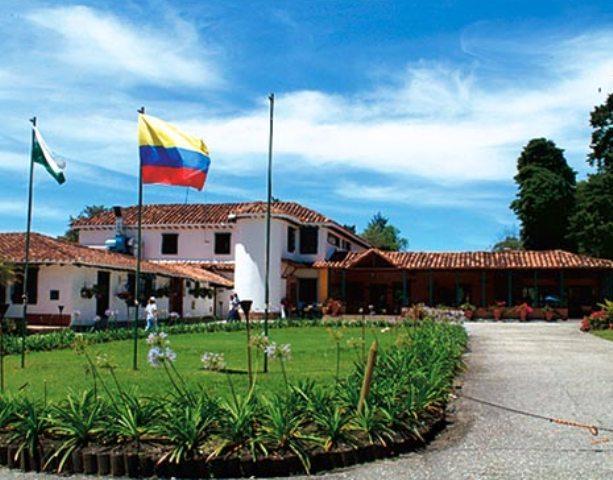 |
El Carmen de Viboral |
| 12,2 Km |
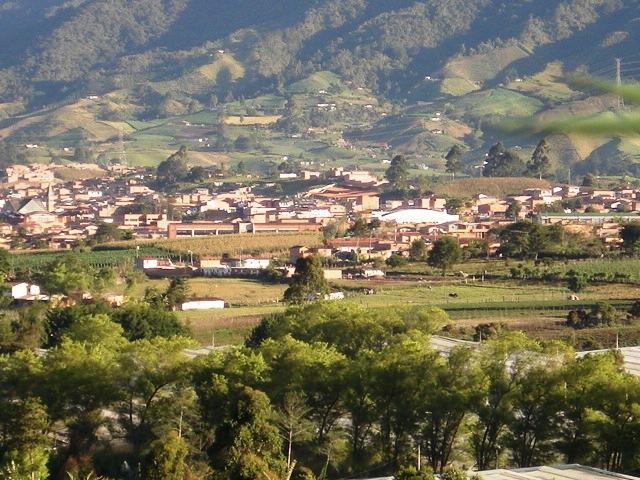 |
Rionegro |
| 15,1 Km |
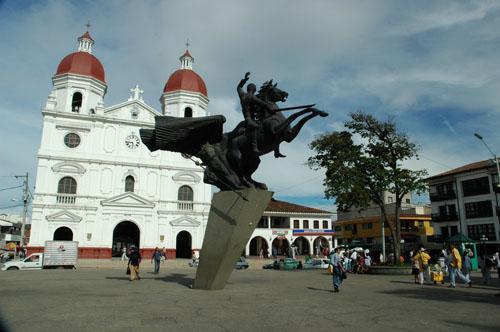 |
Marinilla |
| 19,2 Km |
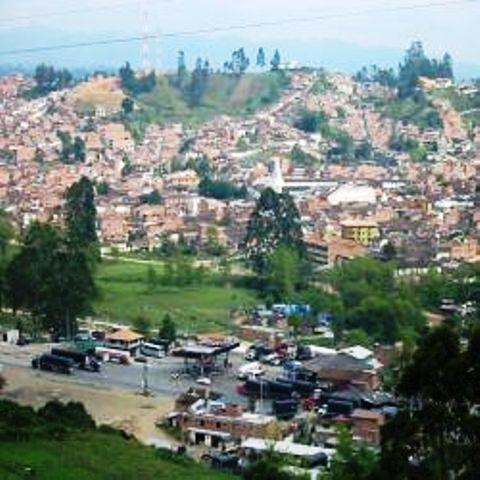 |
Hotel reservation near The eyebrow within a radius of 20 km
Why to book with ROTAS TURISTICAS
The best prices
Our partnerships with the world´s largest operators offer research on the best market prices.
More options
At Rotas Turisticos you can book the hotel, buy the air ticket, book the transfer from the airport to the hotel and vice versa, book the local excursions, rent the car, take travel insurance and consult the places to visit and where to go.
Holiday Tips & Destinations
Hundreds of holiday destinations with all the options that allow you to easily choose the destination that best suits your dream vacation.
ROTAS TURISTICAS
Links


